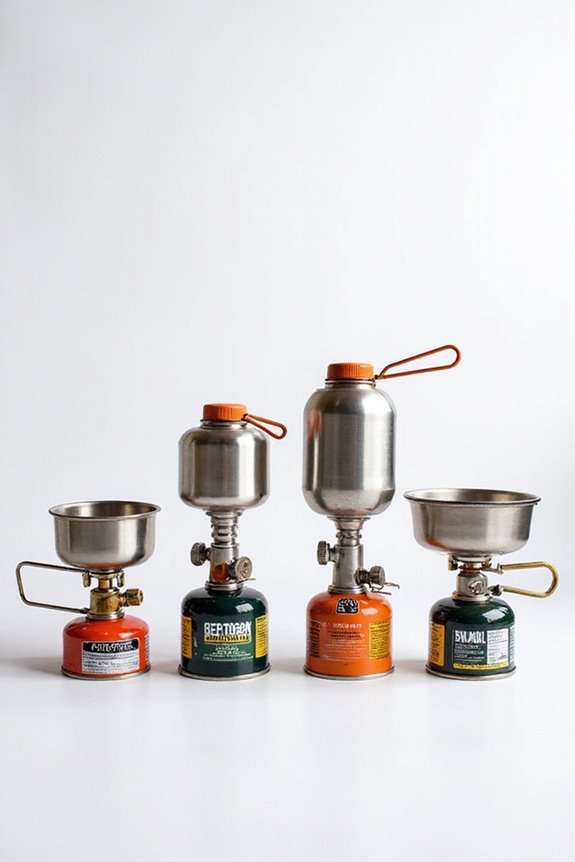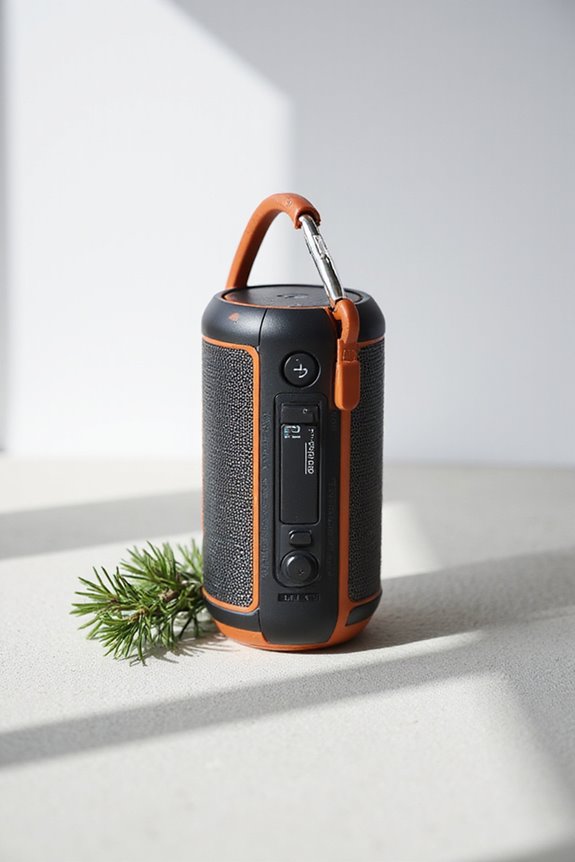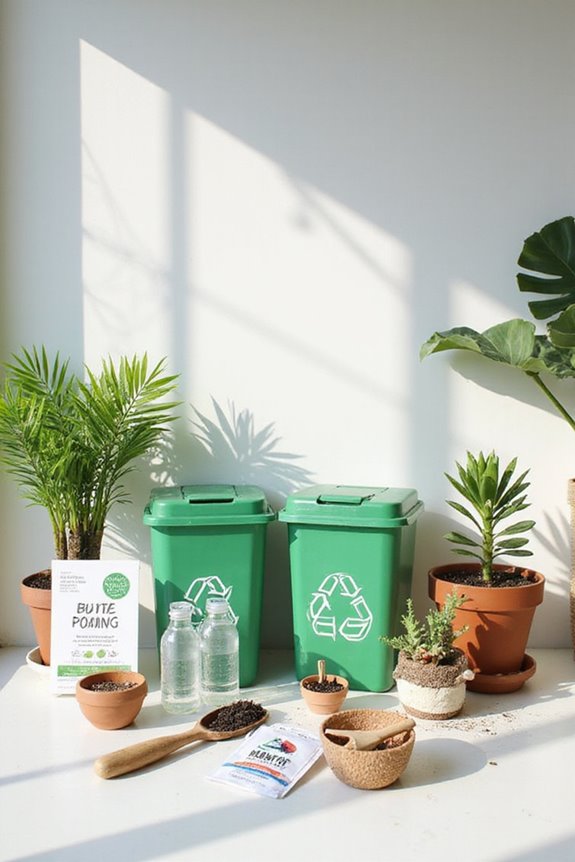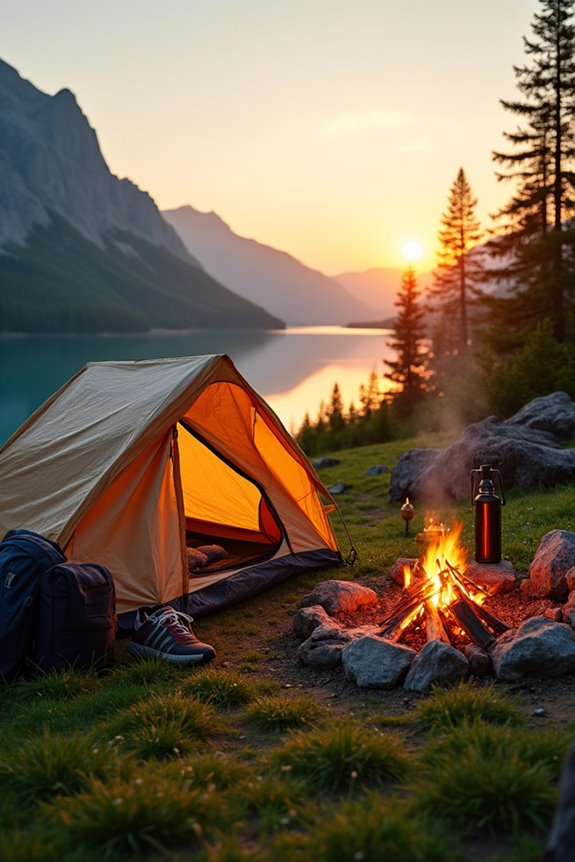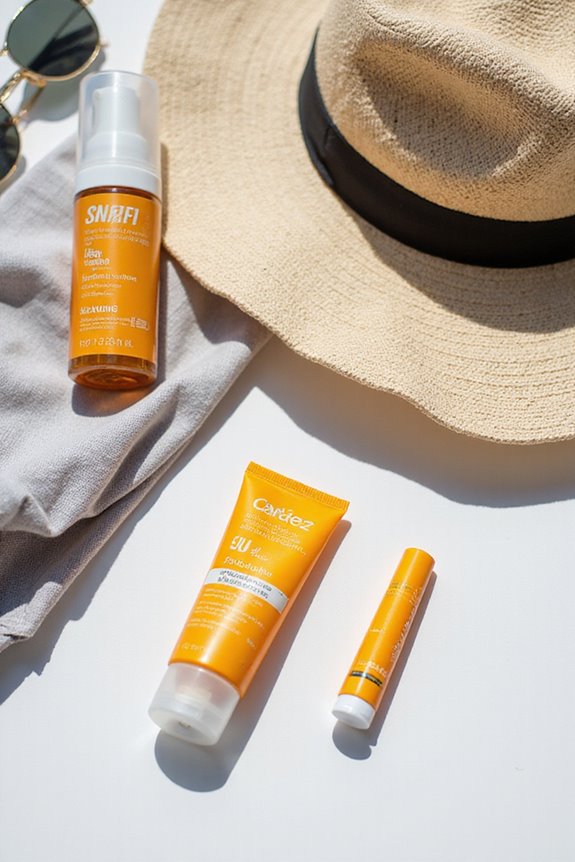Choosing a camping stove can feel overwhelming, but it’s all about finding what fits your adventure best. Consider the type—like lightweight canister stoves for solo treks or sturdy propane models for family outings. Pay attention to performance metrics like boil time or flame control. Don’t forget weight, especially if hiking far. Also, think about fuel type; some work better in the cold. With just a bit of thought, you’ll find the perfect match for your outdoor cooking needs. So, let’s explore more options!
Key Takeaways
- Consider your cooking needs and group size to determine if a lightweight canister or a larger propane stove is more appropriate.
- Evaluate the type of fuel that best suits your environment and conditions, such as propane for cold weather or liquid fuel for extended trips.
- Assess the stove’s weight and portability based on your hiking distance and cooking plans, opting for ultralight options for backpacking.
- Look for features like windproof designs and flame control to ensure efficient performance and cooking versatility in varying conditions.
- Research boil times and fuel efficiency to choose a stove that meets your cooking speed and fuel consumption preferences.
Understanding Different Types of Camping Stoves
When planning a camping trip, one of the first things to reflect on—besides forgetting the marshmallows, of course—is the type of camping stove to bring along. There are various options to evaluate: canister stoves are lightweight and user-friendly, perfect for quick meals, but stability can be an issue. Then there are remote canisters, which offer better placement and simmer control. For those who want a more sustainable option, wood-burning stoves use twigs and sticks found onsite, though they can be less reliable in wet conditions. Liquid fuel stoves are ideal for extended adventures, being adaptable and robust. Don’t overlook integrated designs either—they combine everything into one neat package, making cooking a breeze in the great outdoors.
Evaluating Performance Metrics and Efficiency
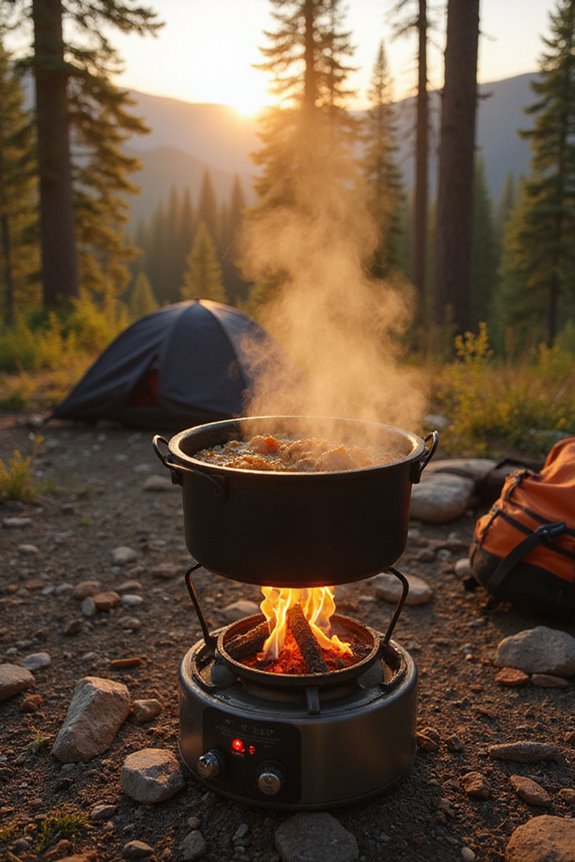
Choosing the right camping stove goes beyond just picking a pretty design; it’s all about performance metrics and efficiency. Boil time is essential—some stoves can bring water to a boil in just 5-7 minutes, while others may take over 15! But don’t be fooled by high BTUs; a well-designed stove might outperform a powerhouse in boiling efficiency. Fuel efficiency matters too; it’s all about how much fuel you use to get that water bubbling. Flame control can make a big difference, allowing you to simmer sauces without burning them. And don’t forget environmental factors—windproof designs and good insulation can boost performance, ensuring that every drop of fuel counts when you’re out in the wild.
Considering Weight and Portability
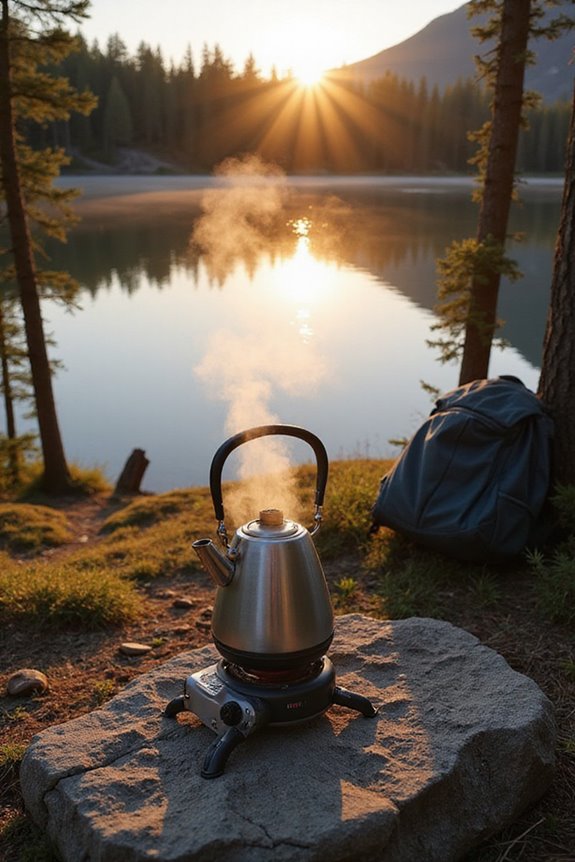
While it might seem obvious that weight and portability are essential factors in camping stove selection, the reality is that the right balance can make or break a trip into the great outdoors. For backpackers, ultralight options like the Soto WindMaster, weighing just 2.3 ounces, are a dream come true, easily fitting into any pack. On the flip side, moderate-weight stoves, such as the Kovea Slim Twin at 9.5 pounds, strike a balance between cooking power and portability. Compact designs, with features like folding legs and integrated cases, enhance packability, making them a breeze to transport. Ultimately, choosing the right camping stove means considering how far you’re hiking and how much cooking you plan to do—because no one wants a heavy stove slowing down an adventure!
Choosing the Right Fuel Type
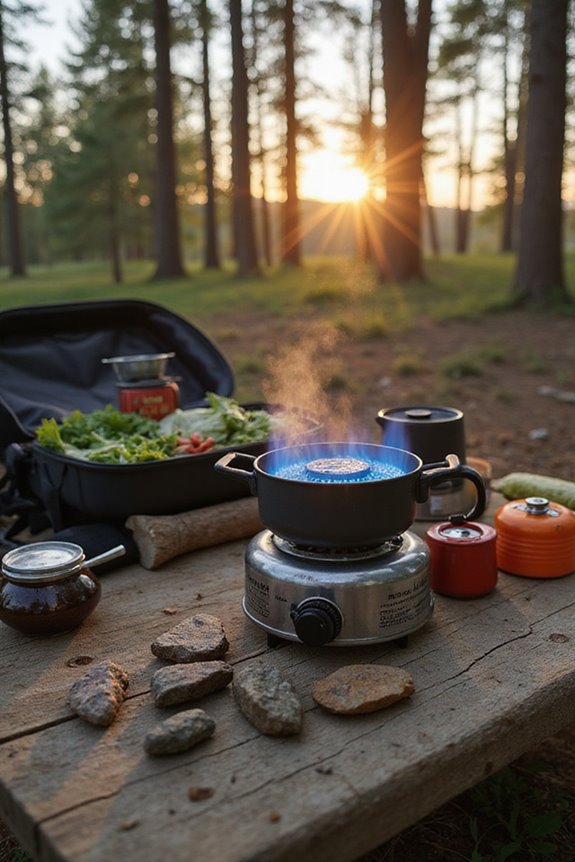
A camping stove is only as good as the fuel that powers it, and with so many options out there, picking the right one can feel like a puzzle. When considering fuel compatibility, propane shines, especially in cold weather performance, maintaining a reliable flame even in frigid conditions. Butane, while convenient, tends to fizzle out below freezing unless mixed with isobutane, which performs better but can still let you down. Liquid fuels like white gas, on the other hand, are champions in the cold, burning hotter due to their unique properties. So, whether you’re car camping or trekking into the wild, understanding your fuel options can make all the difference in keeping your stove roaring and your meals delicious.
Assessing Suitability by Activity and Environment
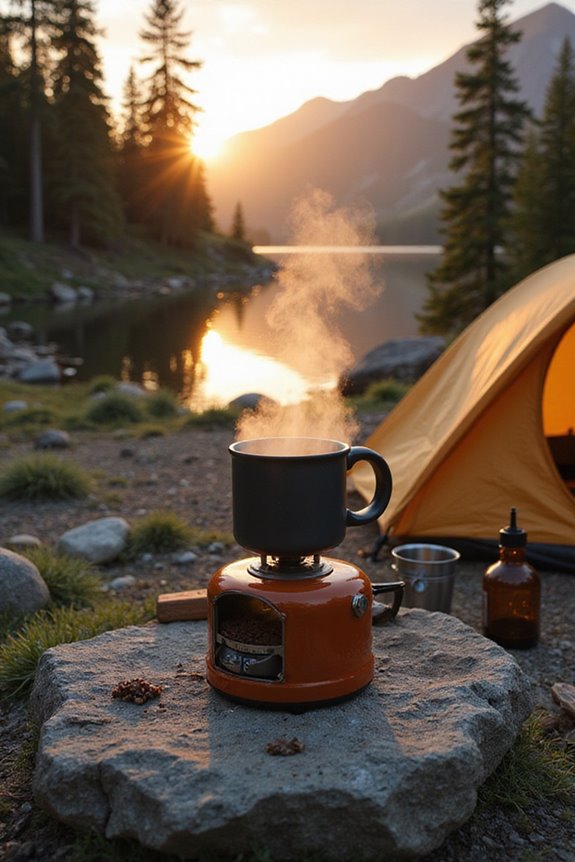
When planning an outdoor adventure, one might often overlook the importance of evaluating a camping stove’s suitability based on specific activities and environments. The right stove can make or break a trip, depending on activity preferences and environmental conditions. For solo backpackers, lightweight canister stoves fit the bill, while larger groups might lean towards standard propane stoves for family camping. If heading into the chilly mountains, liquid fuel stoves shine in cold weather, while canister stoves excel in high elevations. And for those who crave a quick cup of coffee, Jetboil Zip’s fast boil times can’t be beaten. Ultimately, matching the stove to both the environment and your cooking needs guarantees every meal under the stars is a delicious success!
Frequently Asked Questions
How Do I Clean and Maintain My Camping Stove?
Effective cleaning techniques for camping stoves include using warm soapy water and avoiding harsh scrubbing. Maintenance tips emphasize prompt grease removal, proper drying, and careful storage to guarantee longevity and peak performance for future use.
What Safety Precautions Should I Take While Using a Camping Stove?
When using a camping stove, one must prioritize fire safety and guarantee proper stove ventilation. Always light in sheltered areas, avoid enclosed spaces, and keep flammable materials away to prevent accidents and guarantee safe operation.
Can I Use My Camping Stove Indoors?
In a time when knights roamed, the notion of indoor safety with camping stoves was unheard of. Today, proper stove ventilation is essential; using stoves indoors can lead to hazardous carbon monoxide buildup and fire risks.
How Do I Store Fuel Safely for My Camping Stove?
To store fuel safely, individuals must use manufacturer-approved storage containers for specific fuel types, ensuring they are upright, in a cool, dry area, away from sunlight and heat sources, to prevent leaks and hazards.
What Accessories Do I Need for My Camping Stove?
In the domain of outdoor culinary adventures, crucial stove accessories intertwine with cooking gear, forming a symphony of safety and efficiency. Windscreens, stabilizers, and durable cookware are imperative for a harmonious camping experience, ensuring delightful meals under the stars.

